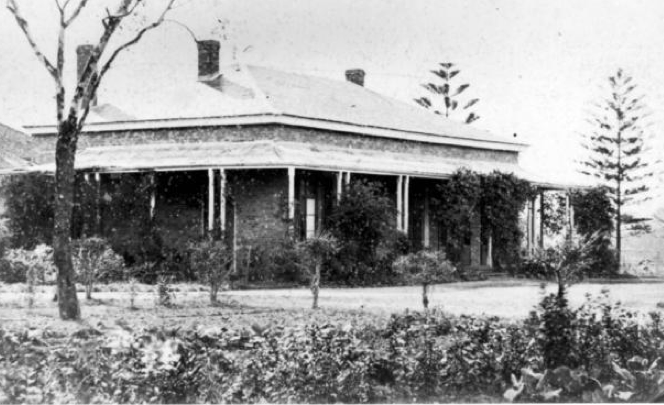Collingwood Notables Database
John Dight
1808-1867
Early settler, flour miller
Dight has bequeathed his name to Dight’s Falls where he harnessed the flow of the Yarra to operate the first water-driven flour mill in Melbourne. In 1840s Melbourne the stretch of the Yarra in what is now Abbotsford attracted people to build houses on large landholdings in an almost rural environment, but Dight was the first to combine home and industry.
Dight was already in the business of flour milling with a mill near Campbell Town in New South Wales called ‘Ceres’. In 1839 he purchased Portion 88 at the Government land sales of Port Phillip land, held in Sydney. The allotment was approximately 25 acres on the Yarra. In April 1840, he notified his customers through The Sydney Herald that he was leaving to go to Port Phillip, and with his brother Charles he built the Ceres mill, completed in 1841.
Dight’s Falls started as a naturally occurring rock barrier just below the confluence of the Yarra River and Merri Creek, where the river bisects sandstone to the east and volcanic deposits to the north and west. First sighted by Europeans in 1803, the area was an important site for Woi wurrung clans and became a contact zone in the early colonial period. William Thomas, assistant Aboriginal protector, was headquartered close by (1843-47) and the Native Police Corps was stationed nearby (1843-4). The Merri Creek Aboriginal School (1845-51), just upstream, was supported by the ngurungaeta (clan head) Billibellari. The Dights must therefore have interacted with Wurundjeri people, as did the McCrae family further along the Yarra.
Dight constructed an inlet channel to turn an undershot water wheel. In order to regulate flow or to ensure flow for times when river levels were low, Dight constructed a rough stone weir. It was not long before what was at first referred to as Gardiner’s Falls or Yarra Falls came to be known as Dight’s Falls. In 1854 Dight also built a mill in Leicester Street, Carlton which was the largest in the colony and was very successful.
For his growing family Dight built a house, angled to give a wonderful view up the river, referred to as Dight’s House originally and later Yarra House. Between 1833 and 1862 Isabella gave birth to 8 daughters and 5 sons. In 1848 he doubled his property by buying the neighbouring allotment, Campbellfield, from Mrs Campbell for the knockdown price of £2000. His younger brother Charles Hilton Dight was elected a member of the first Victorian Legislative Council in September 1851 but died at Yarra Falls a year later at the age of 38. His death exacerbated the postnatal depression of his wife Emma who returned to NSW and hanged herself at her uncle’s residence. Charles and Emma may have been living at Campbellfield House with their very young family. William Degraves, a miller, merchant and grazier with a steam powered flour mill in Flinders Lane, lived at Campbellfield in the mid 1850s with his wife Robina, possibly treating it as a country house.
Dight abandoned milling in 1864, leased the mill to Thomas Kenny, and spent his few remaining years at his NSW station, Bungowannah, near Albury, while a number of his adult children remained in Melbourne. Campbellfield was advertised to let and was tenanted by George Bennett, town clerk of Collingwood, from 1868 to 1874. Mrs Dight eventually sold the property to Edwin Trennery in 1878. Most of the land was subdivided into building blocks with the exception of a ten-acre reserve which became Victoria Park, and the old houses Campbellfield on three acres and Yarra House on seven acres. (See link below to 1882 auction plan of the Campbellfield Estate). Campbellfield became home to architect Leonard Terry and later architect William Pitt. Yarra House attracted Thomas Shelmerdine as both a substantial family home, and a site where he could establish a hat factory.
The original mill remained unoccupied until 1888, when millers Gillespie, Aitken and Scott operating under the name of ‘Yarra Falls Roller Flour Mills’ constructed a new mill and associated buildings at the site. The mill race was rebuilt in much the same position, using bluestone blocks from Dight’s old mill building. This enterprise was sold in 1891 to the Melbourne Flour Milling Company. The mill changed hands for a final time in 1909 before it was destroyed by fire.
Despite the many changes to the area and particularly the encroachment of the Eastern Freeway and the associated alteration to the course of the Yarra, Dight’s Falls remains a picturesque and evocative spot well known to Collingwood residents. Standing on the high land off Trenerry Crescent, we can step back in time and visualise the vista that would have been seen by the Dight family. Earlier in the twentieth century it was rather wild and inaccessible, an inviting place for adventurous children to explore. Enhancements in the 1990s restored the bluestone mill race and parts of the later mill, created a Koori Garden, and improved public access.
Yarra House 1868-1870
Life Summary
| Birth Date | Birth Place |
|---|---|
| 2 September 1808 | Richmond, Hawkesbury NSW |
| Spouse Name | Date of Marriage | Children |
|---|---|---|
| Isabella Mitchell (1816-1896) | 27 August 1832 | At least 13 born, most survived |
| Home Street | Home City | Status of Building |
|---|---|---|
| 201 Reilly Street | Abbotsford | Demolished |
| Church | Lodge |
|---|---|
| St Peter’s Anglican Church, Eastern Hill |
| Death Date | Death Place | Cemetery |
|---|---|---|
| 23 April 1867 | Albury NSW |
The Argus; The Age; Collingwood Conservation Study; Allom Lovell, Former Dight’s Mill, Collingwood: conservation analysis; Dight family records in the Collingwood History Collection.
Dight family tree
Heritage Council Dights Mill
Melbourne Water Dights Falls

